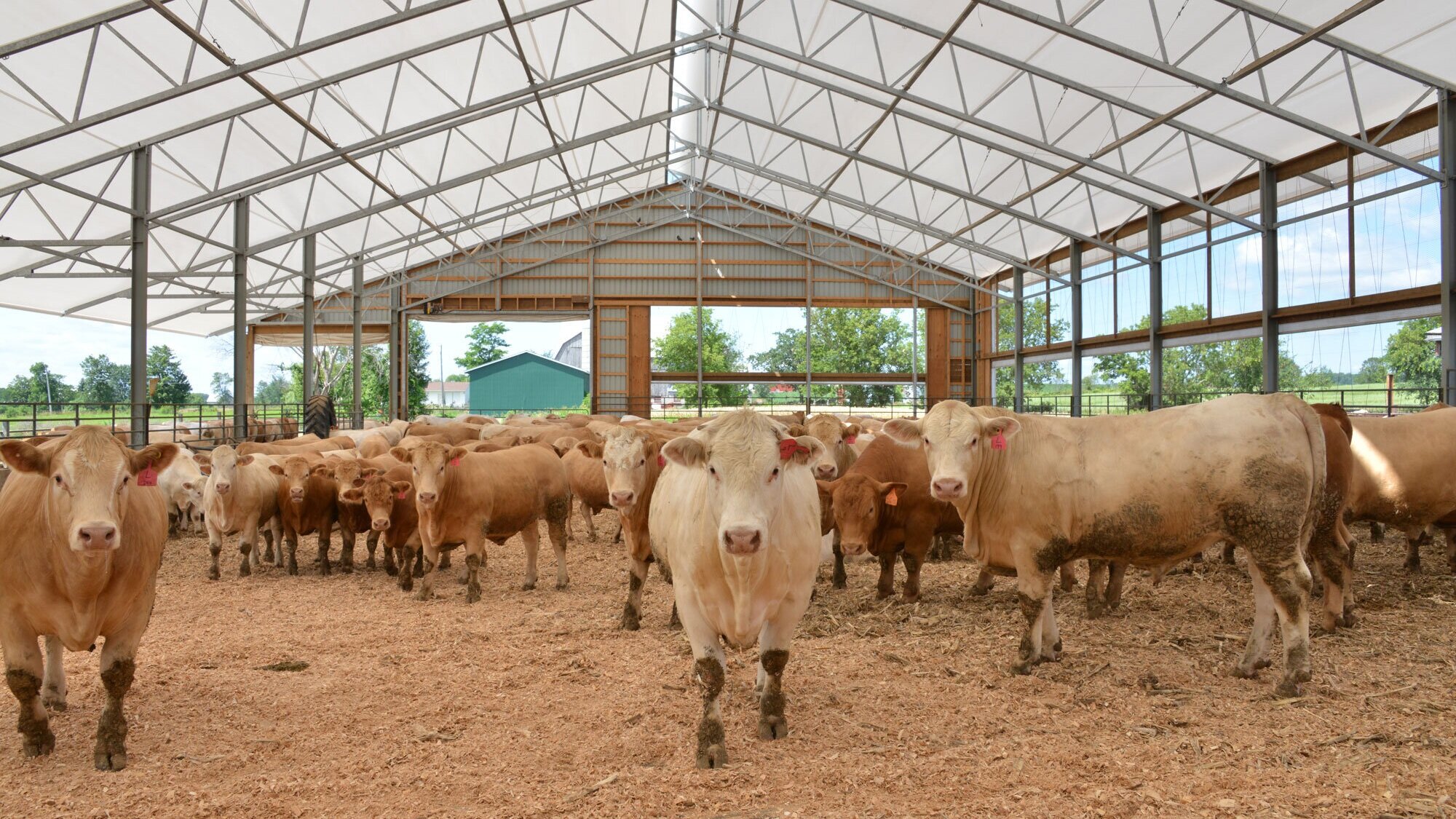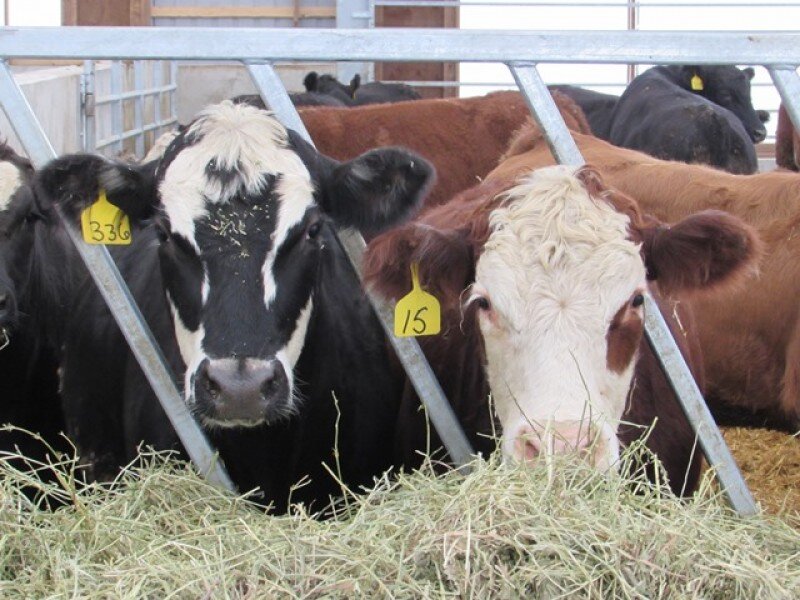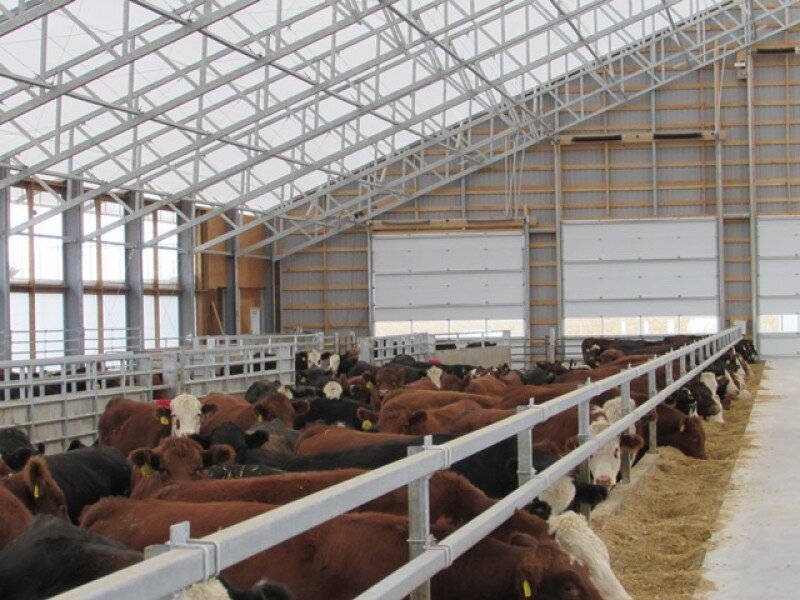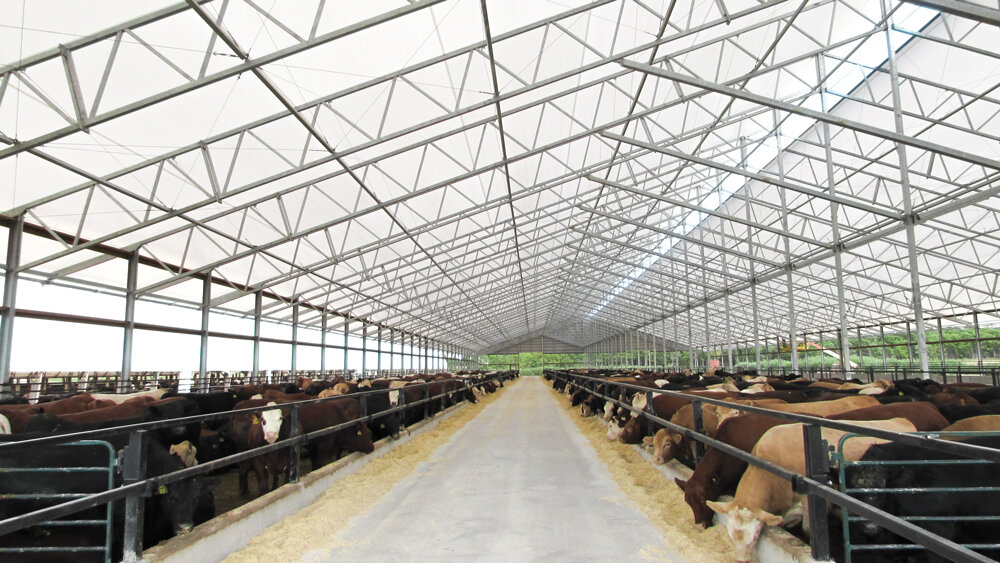THE BENEFITS OF HOUSING LIVESTOCK IN A FABRIC ROOF BARN
Choosing the right barn structure is the first step to success for your farm.
Of all the building choices you have, fabric roof buildings create an atmosphere that most closely resembles the “great outdoors” while simultaneously providing all of the protection of being indoors.
Whether beef cattle, dairy cows or other livestock - Farmers find that their animals are much more content when housed in one of our fabric roof barns, compared to other housing options. But what is it about these structures that the animals like more?
How are fabric roof buildings beneficial to animal well-being?
Livestock housed in fabric roof barns enjoy a more natural environment, designed to suit their specific needs, thus keeping them happy and healthy.
There are three main ways that fabric roof buildings contribute to the well-being of livestock:
1. Fabric roofs provide good, natural lighting.
Do you ever feel a major change in your mood and energy levels due to the weather? Your animals do too!
Just like humans, cows experience hormone releases as a result of exposure to natural light. When animals are given natural light, they are more calm and less aggressive.
Cows require a well-lit environment as well because they can get nervous in shade.
With a fabric roof barn, the animals get lots of natural light, no matter the weather. Even on cloudy days, the fabric roof will help to capture and disperse light throughout the whole building, creating a bright and shadow-free environment.
Livestock, like people, are also more productive when they get ample natural light. Long hours of light exposure, particularly natural light, encourages greater milk production in dairy cows.
2. They allow for proper, natural ventilation.
As you know, air quality is important for the health of your animals. Like all living things, your livestock need fresh air.
Without proper ventilation, gasses, moisture, and bacteria will build up in the air. This leads to an increase in dust and mould, among other things, leading to respiratory issues. You don’t want to work in that kind of uncomfortable and unhealthy environment. And your animals don’t want to live in it, either. Not only will they be uncomfortable, but your animals will experience higher rates of sickness and mortality as a result of the poor air quality.
Our fabric roof barns are designed to provide plenty of natural ventilation to keep your herd happy and healthy. The option to have sidewall curtains on a strong steel frame allows for lots of airflow during the warmer months, while an overshot roof offers a great option for top ventilation.
Airflow is particularly important during the winter season, when the building is sealed up against the cold and snow. This is when alternatives like the overshot roof comes in handy. The top ventilation allows for air exchange without exposing your animals to the elements.
3. The fabric roofs help to moderate indoor temperatures.
The combination of lighting and ventilation provided by a fabric roof barn also creates the ideal temperature environment for livestock.
Unlike more traditional barns, fabric roof buildings stay naturally warmer and brighter during the winter due to the amount of light that comes through. Yet, in the summer, they provide the perfect amount of shade and ventilation to keep your livestock from overheating.
Heat stress is always a concern with dairy cows, who prefer cooler weather. Hot, humid conditions can lead to lower milk production and other health issues. But with the option of cross-ventilation, you can create plenty of air movement to help moderate the temperature and keep your cows cool. This, in turn, reduces the usual drop in milk production caused by extremely hot weather.
How could a fabric roof barn benefit you?
The biggest benefit of fabric roof barns is that they give your animals the proper amount of light and ventilation, while keeping them at a comfortable temperature. As a result, you will see your animals thrive and your business grow.
And, when it comes to cold housing, fabric roof buildings are some of the most cost-effective choices for housing livestock. With a fabric roof building, there is little need for daytime artificial lighting or mechanical ventilation, which means that you will drastically cut down on energy costs.
With all of that fresh air and natural light, it won’t just be your animals who benefit. You may also find yourself feeling healthier and more productive when working in a fabric roof barn.
Fabric roof buildings aren’t just good for your animals. They are good for you too!






